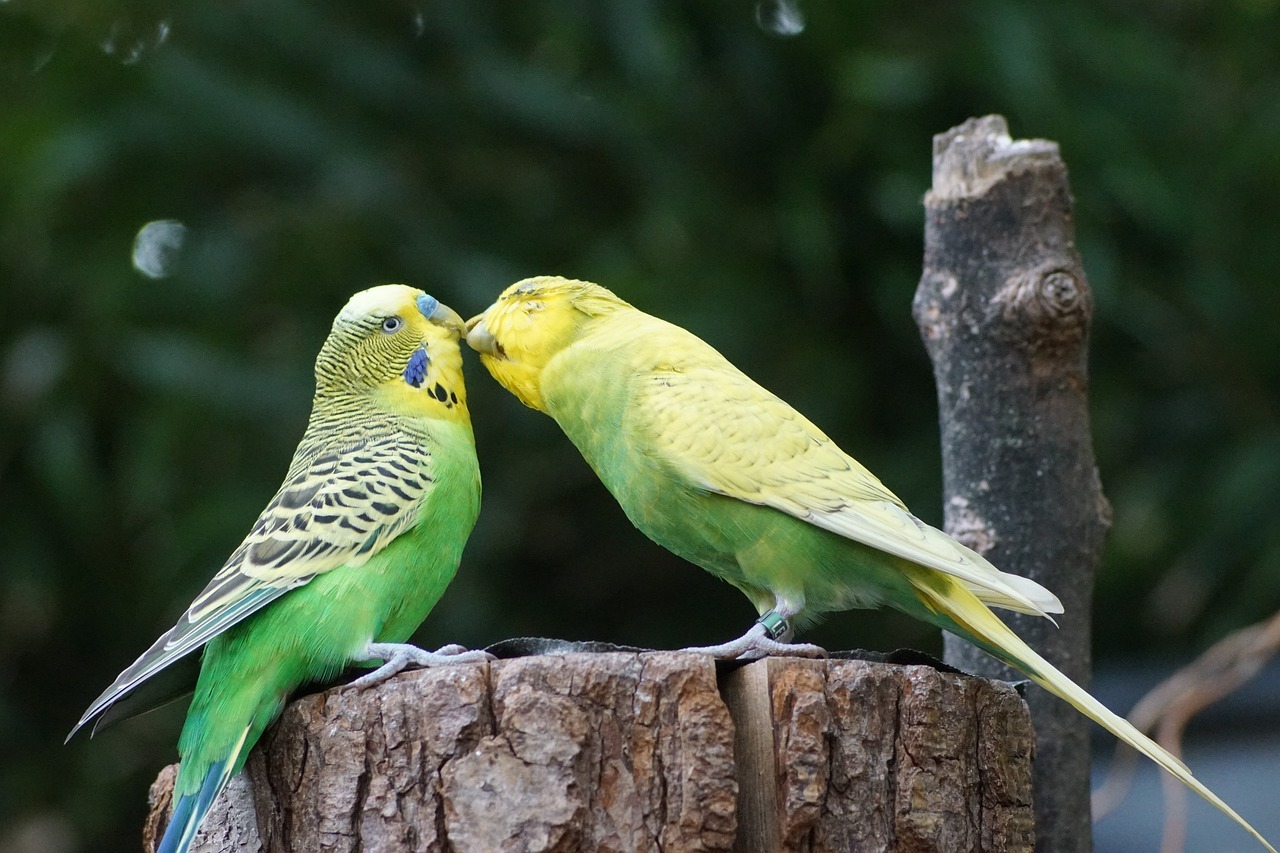The Lovebird is a bird species endemic to Africa. As a house pet, it is energetic and charming. As its name suggests, it needs a companion (or a lover) to maintain good health and socialization. This bird is known to make a deep connection with its partner, whether if it’s with another bird or with its owner. If you want to pet a caring, loving bird, make sure to read further!
History
There are a total of nine Lovebird species, all of which stemmed from the genus Agapornis. Majority of Lovebirds have green bodies and varied head feather coloration. Their closest relatives are found in the Asian continent: Hanging Parrots.
Lovebirds are highly sociable birds, breeding in monogamous pairs as soon as they reach maturity (10 months old). Their mating style begins with a courtship display. Monogamous pairings are essential to the social stability of their species’ flocks and underlies much of their social characteristics.
If a bird’s mate dies or gets separated from the flock, the partner exhibits erratic habits and behavior, which some professionals likened to someone having a depression—this is why a pet Lovebird needs a companion to maintain its lively, energetic disposition.
Two Lovebirds feed each other—a feeding technique very reminiscent of affection among human beings—and this behavior could be a wonderful sight among owners and their guests.
Characteristics of a Lovebird
Average size: 5 to 7 inches long from head to the tail’s end
Average live span: More than 15 years with proper grooming and care
Lovebirds are among the smallest parrots with stocky build, blunt tail, and a large, sharp beak. The Fischer’s Lovebird, Masked Lovebird, and Black-cheeked Lovebird (several of the most famous Lovebird species) have prominent white rings surrounding their eyes.
Three species of Lovebirds have differentiating characteristics that allow you to distinguish sexes apart. For instance, male Black-winged Lovebirds have red crowns, whereas females have overall green plumage. Other species do not have these differentiating characteristics, which can be hard to determine their sexes by just looking at them.
Despite their caring disposition comes aggression, a common occurrence among Lovebirds. They are territorial and cannot get along well with birds of another species. Within a flock, they get hormonal or jealous during the breeding season. In captivity, they can attract other Lovebirds and even other bird species.
Caring for Lovebirds
It’s best if you keep two Lovebirds together, but if you have decided to keep only one, make sure to devote enough daily interaction. Lovebirds love to chew and destroy small stuff, so ensure to provide plenty of toys such as cardboards and paper. Foraging toys can also help provide essential mental stimulation.
Lovebirds can thrive in usual household temperatures, those below 80 degrees Fahrenheit. The cage should be placed off of the floor and in a well-lit area. A cage that measures 18″W x 18″D x 24″H is ideal for a pair of Lovebirds. Provide perches that are at least 4” long and ½” in diameter. Place a variety of perch sizes to lower the risk of arthritis. If you are taking care of another bird species, do not house it with your Lovebird.
Just like other parrots, Lovebirds love taking baths, so make sure to provide filtered, chlorine-free water for bathing at least twice a week. Remove the water immediately once your pet bird is done bathing.
Maintain the cage’s cleanliness by cleaning and disinfecting the habitat, toys, and perches regularly. Replace the substrate weekly or as often as needed. When dishes, toys, and perches are worn out, replace them immediately. Before you provide an item to your pet, make sure that the item does not contain zinc, lead, or lead-based paints, as toxic metals can cause serious complications to your bird.
The diet of Lovebirds is no different from other parrots. They feed on specialized pellets too, and these should make up 60 to 70% of their diet. Provide fortified seeds, fresh vegetables, and fruits occasionally. Avoid providing fruit seeds, caffeine, chocolate, alcohol, and avocado to your pet bird, as these food items can cause serious medical complications. Food items that have not been eaten within a few hours should be discarded. When giving a treat, make sure that it does not exceed 10% of your bird’s total food intake.

